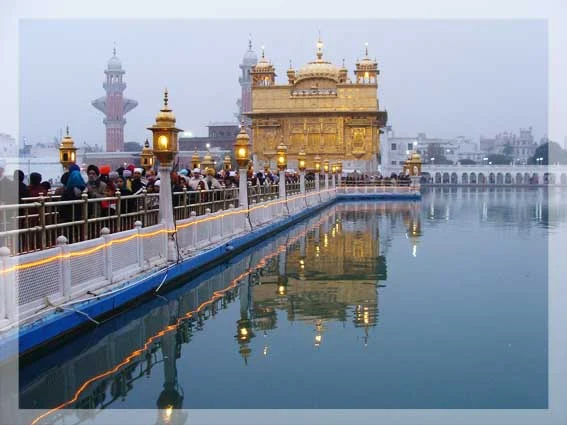Development of Hindhu Buddhist religion and culture in Sout Asia
History - Development of society and culture during Hindu-Buddhist period - Hindu-Buddhist infulenze had been present in Indonesia before the foundation of the first Hindu-Buddhist kingdoms in Indonesia, such as Kutai Kingdom in East Kalimantan and Ho-ling in Central Java. The government development in the kingdoms in Nusantara was also influenced by Hinduism-Buddhism, but local rulers had appeared before Hinduism-Buddhism entered Indonesia.
Why were local rulers in Nusantara (Indonesia) influenced by Hinduism-Buddhism? Who played the role to spread Hinduism-Buddhism in Nusantara. The answer is are follows. The ancestors of Indonesian people had existed and took control in certain parts of Nusantara, whereas Hindu-Buddhist people were a group that played an important role in international community, for example in trade, science, social life, and culture.
To let you know more about the influence and role of Hinduism-Buddhism in people's life in Nusantara, will describe the development of society, culture and government in Hinduism-Buddhism period in Indonesia.
Early development of Hinduism
Hinduism came from India. Therefore, to learn its development, we need to study the historical development of India in terms of the people and cultural development from time to time. Based on the age of Vedas, expert concluded that Hinduism had storied to grow and develop since approximately 6.000 years BC. As one of the oldest religions, Hinduism then spread to different parts of the world, including Southeast Asia.
1. Indian People
The native people of India were Dravidians. They lived in the Dekkan plateau and the fertile land along the River Sindhu. Their life was still quite simple. In approximately 1500 BC, the Aryans settled in India.
They originated from Central Asia and spread to Iran (Persia), Mesopotamia, and also Europe. The Aryans who entered India were part of those who had came to Iran. They entered India in two phases and two different places. First, they entered Punjab, an area intersected by five rivers.
Their arrival was resisted by the Dravidians who had settled in the areas earlier. The Aryans succeeded in beating the Dravidians because they were more modern and stronger. In the second phase, Aryans came into India in the valleys of two rivers, the Ganges and Yamuna, which were known as Doab region.
Their coming was not resisted by the native people, they even mixed with them through marriages. These people were the ancestors of today's Indians.
The Aryans developed their culture in the two regions. It was stated that the Aryans were the ones who received the Veda revelations The revelations were not received atat once but through a long period of time and in different places.
The persons who received revelations were called Maha Resi. The revelations were received aurally, so Veda revelations were also called Sruti (sru-aural). The period in which Veda revelations were received was called Veda period. Veda teaching were then propagated all over the world.
Veda books contain praises to gods. Belief in gods (pantheon) was abtained from mediations. Accordingly, there was belief in Agni (god of fire), Bayu (god of the wind), Surya (god of the sun), Chandra (god of the moon), Maruta (god of storm), Baruna (god of the sky), Parjana (god of rain), Indra (god of battle), usa (god of dawn), and others.
None of the gods they praised is considered highest. Only sometimes certain gods are praised more frequently than others, for example Agni. Agni is considered extraordinary because fire is always needed in every home. Besides, fire is also a requirement for praising gods in additions to other offerings.
The system of bilief which worships many gods (polytheism) has a special group in the society that specializes in performing religious ceremonies. This group is made up of brahmanas or priests. The Aryans believed that these people were the ones who could prevent gods' anger and bring blessings to the followers of the religion. The belief in brahmanas was called Brahmanism which was the embryo of Hinduism.
2. People's life
To maintain authority over the people. Aryans tried to keep the purity of their race. This means they prohibited cross-marriage with the Dravidians. For that purpose the Aryans apllied the caste system among the people.
In the caste system, people were divided into several strata or castes, from the highest to the lowest. The caste of someone determined his/hes rights and responsibilities. in the society.
In the beginning people were only divided into three castes. Brahmanas (spiritual leaders and scientists), Kshatrya (government officials, employees, and soldiers), and Vaisya (farmers and merchants). Then another caste was formed, the Sudras (craftsmen, smiths and fishermen).
Initially the caste system was not rigid. People were still able to change castes if they changed professions. However, as the society developed into a more complex structure, the caste system became more rigid. Intercaste shifts were made impossible.
In such a condition, the fift caste was developed, the Pariah or Pancamas which means the outcast or excluded people. This caste included people who did dirty jobs so they were regarded as contemptible and therefore had no rights in the society.
3. Essence of Hindu Teachings
According to Hinduism, life in this world is hard (samsara) because of the bad conducts performed in the previous life (karma). Then men are reincarnated and given another chance to improve themselves, so they might be reborn in a lower caste or even as animals.
However, one who has reached perfectness can obtain moksha or liberation from samsara. People who have reached moksha are not reincarnated, instead they live eternally in nirvana (heaven). Hinduism is pessimistic in nature because life is seen as hardship or misery and not as something enjoyable.
Next article : Early development of Buddhism
Next article : Early development of Buddhism
May be "Development of Hindhu Buddhist religion and culture in Sout Asia" useful for history lovers.

